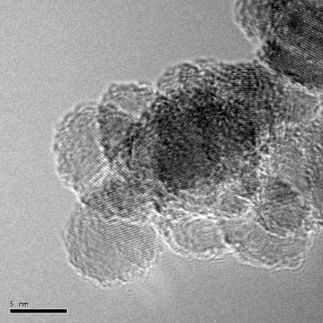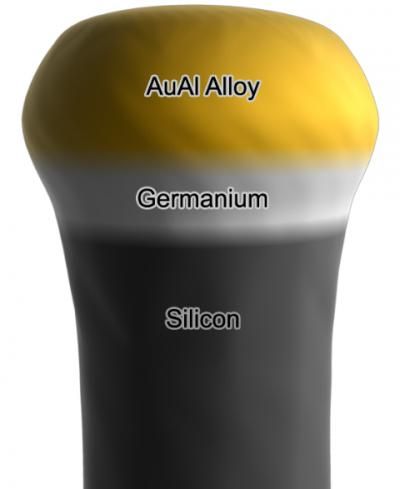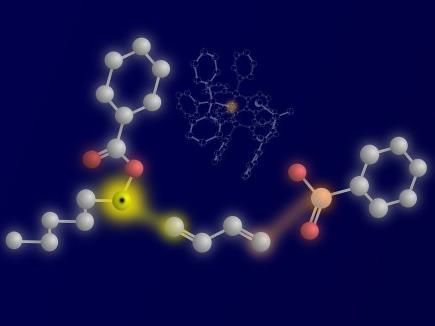UV-sensors from the oven
Scientists at Kiel University revolutionize the nanostructure production process
Placed in fire detectors and water treatment units UV-sensors can save lives; also in many areas of industry and environment the demand for these devices is rising steadily. Scientists of Kiel University have been able to ”bake” nanostructures within seconds, in order to fabricate very fast UV-sensors. This new technique totally diminishes the need to use sophisticated equipments and toxic chemicals. It will therefore be highly interesting for companies. The scientists have published their results in Advanced Materials.
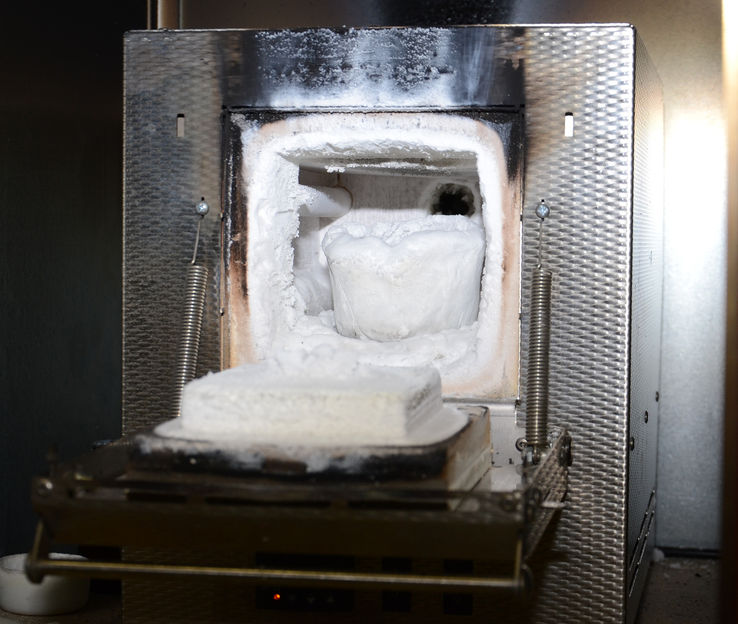
Snowscape in an ov Kiel scientists developed an new method to create nanostructures. It could revolutionise uv sensor production processes.
Schimmelpfennig/CAU
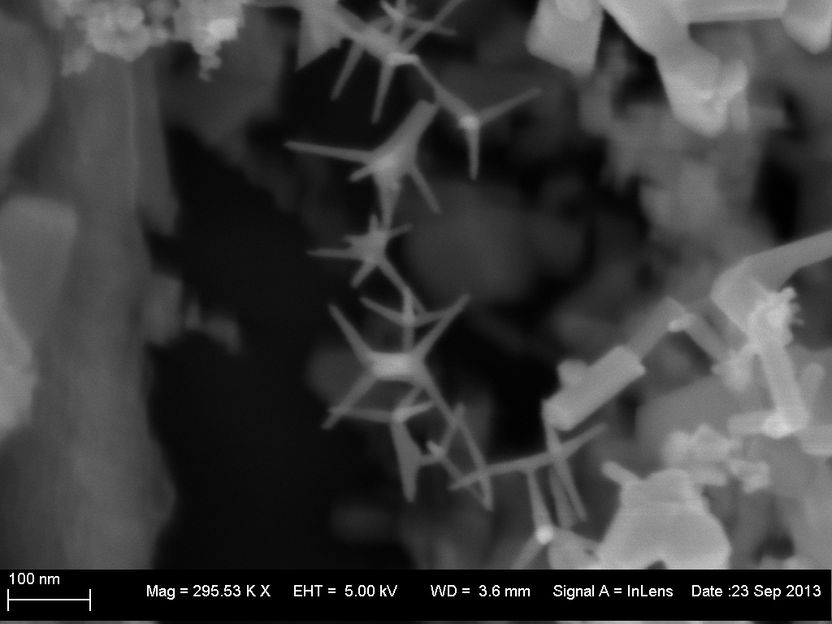
Microscopy images of zinc oxide nanostructures bridging two contacts (from top to bottom).
Mishra/Advanced Materials
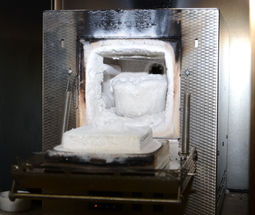
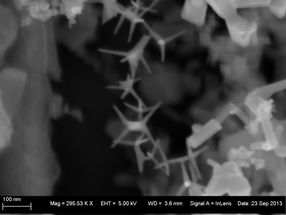
When building a sensor device from nanostructures, one of the biggest challenges is how to interconnect them into electrical contacts in chips because of their extremely small dimensions in nanoscale range, says Dawit Gedamu, the first author of the paper. Most of the existing synthesis methods, such as Chemical Vapour Deposition or Vapor-Liquid-Solid (VLS) growth allow synthesis of different nanostructures only under specific conditions. For instance, the presence of catalytic particles, particular substrates, complex temperature, atmospheric conditions and many more factors must be met. Furthermore, to integrate the synthesized nanostructures with these techniques in the chips requires another very sophisticated step. There are silicon or gallium nitride based UV detectors already available in the market but they lack a certain level of selectivity and also they cannot function in harsh environments. High production costs, multistep processes and the requirement of specific operating conditions limit the field of application for these sensors.
“Extremely promising” for various applications are the sensors that are based on zinc oxide, says Dr. Yogendra Kumar Mishra, scientific assistant with the work group “Functional Nanomaterials” at Kiel University and main author of the study. “Nanostructures made from zinc oxide are highly interesting for multifunctional applications, due to their sensibility to UV light and their electrical and mechanical properties”, says Mishra. Also, the material is relatively inexpensive and easy to synthesize. Since up to a certain level zinc is necessary for human organisms, these zinc oxide nano-microstructures could be of potential interest for biomedical engineering.
The scientists have fabricated a network of interconnected zinc oxide nano-tetrapods as a bridge between electrodes on a chip by a new single step flame transport synthesis process: In a simple oven or airbrush gun-type burner it only needs high temperature to convert zinc microparticles into nano-micro tetrapods. This process takes place in normal air environment and the necessary amount of oxygen is regulated by the flame itself. “This burner-flame transport synthesis method allows us to grow the zinc oxide nano-microstructures directly on the chip – and that only takes a few seconds, it is just a matter of driving the chip through the flame while the nano tetrapods assemble themselves onto it!” Mishra is excited to report. The high temperature of the flame ensures contacts of good quality between chip and the nanostructures, which is highly desirable for a better performance of the device.
The result: the sensor produced by the Kiel University scientists reacts to UV light within milliseconds of its exposure. Additionally, it also works in rather rough environments. These simple and inexpensive manufacturing conditions as well as the usage of pure zinc microparticles make this production method at the laboratories at Kiel University highly attractive for manufacturing companies. “We already had regional companies inquiring about our work. It shows that our basic research can be transferred into concrete applications”, Professor Rainer Adelung, head of the research team, explains. The next logical step for the material scientists is therefore to find the ways to produce these nano-tetrapods on a larger scale.
One curious fact: Zinc oxide nanostructures started their career as waste from conventional VLS growth experiments for zinc oxide. One day, Yogendra Mishra examined the crystals that looked like artificial snow under the microscope: “Their particular intertwining structure and their ability to detect light implied an enormous potential”, says the scientist, who was holding a fellowship from the Alexander von Humboldt Foundation while developing the new method in the years following this discovery. To successfully produce the nano-tetrapods, the right combination of temperature and mixing ratio of zinc particles and sacrificial polymer as well as other parameters had to be investigated.
Nano science is strong at Kiel University. Two big Collaborative Research Centres (CRC) provided Mishra with necessary resources and expertise. There, almost 200 scientists work meticulously on molecules, which can be switched on and off by light in order to take over certain functions (CRC 677 “Function by Switching”), and on new materials, which are capable of measuring tiny magnetic fields in the human brain and heart (CRC 855 “Magnetoelectric Composites – Future Biomagnetic Interfaces”). Developing new diagnostic methods and devices is their goal. The German Research Foundation (DFG) supports their research.
Original publication
Other news from the department science
These products might interest you
Most read news
More news from our other portals
See the theme worlds for related content
Topic world Sensor technology
Sensor technology has revolutionized the chemical industry by providing accurate, timely and reliable data across a wide range of processes. From monitoring critical parameters in production lines to early detection of potential malfunctions or hazards, sensors are the silent sentinels that ensure quality, efficiency and safety.

Topic world Sensor technology
Sensor technology has revolutionized the chemical industry by providing accurate, timely and reliable data across a wide range of processes. From monitoring critical parameters in production lines to early detection of potential malfunctions or hazards, sensors are the silent sentinels that ensure quality, efficiency and safety.
